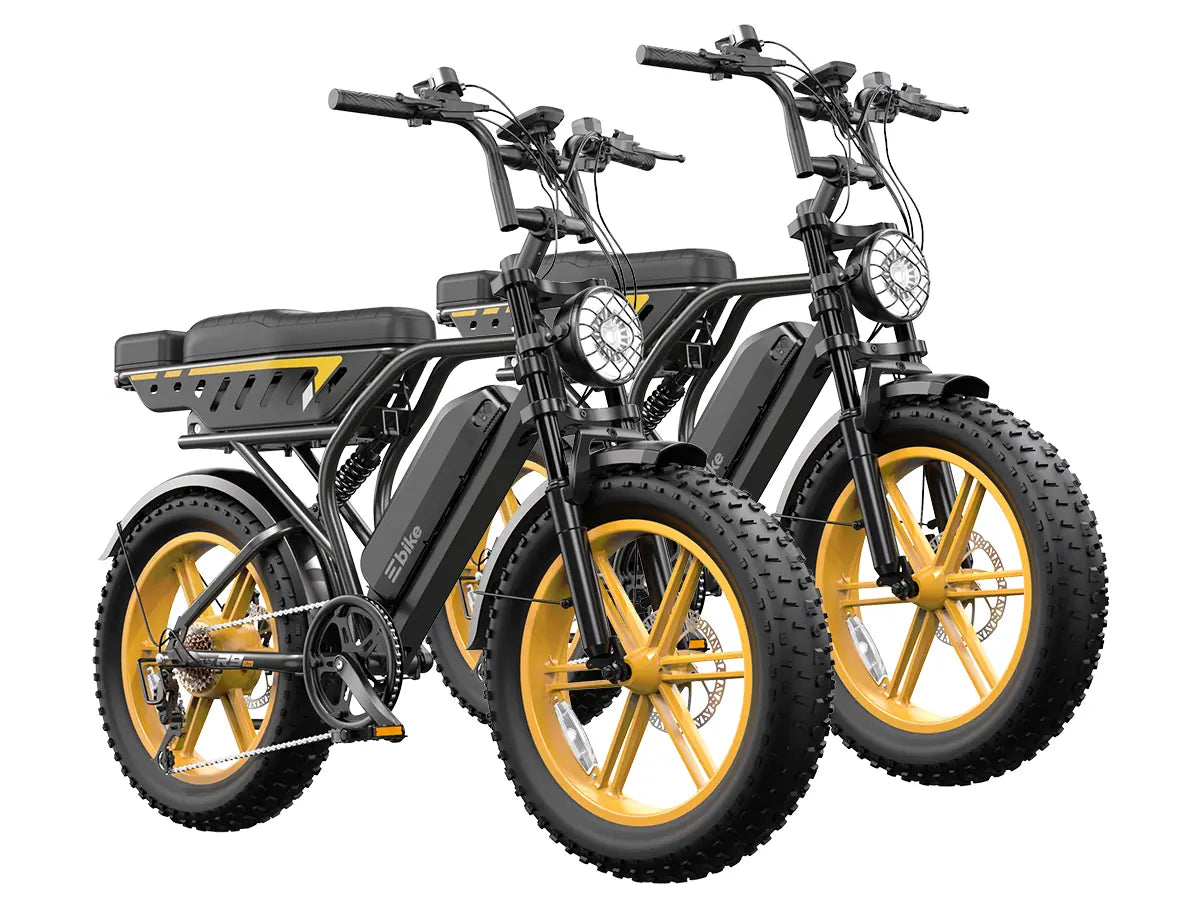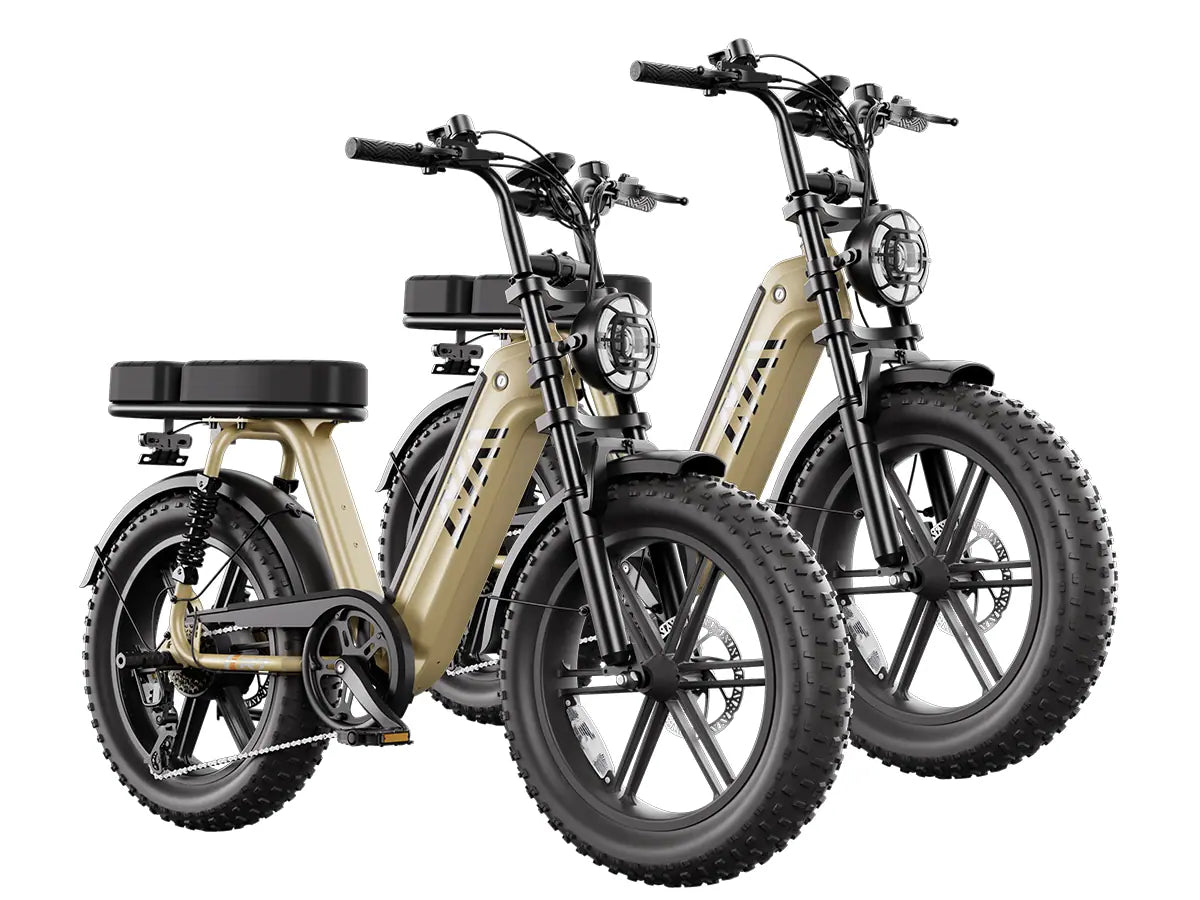Fat tire ebikes perform exceptionally well in snow and sand due to their wide tires, which distribute weight over a larger surface area, preventing sinking and providing superior traction. Their electric motors supply the necessary torque to navigate soft, unstable terrains like powdery snow and loose sand, making them ideal for winter riding and beach adventures where conventional bikes struggle.
What Makes Fat Tire Ebikes Suitable for Snow Riding?
Fat tire ebikes excel in snow because their tires, typically 4 to 5 inches wide, create a large contact patch that “floats” over snow instead of digging in. This reduces ground pressure by up to 70%, minimizing the risk of getting stuck. Deep tread patterns and low tire pressure (3–8 PSI depending on snow type) enhance grip on icy or packed snow surfaces. Additionally, electric motors provide steady torque for climbing and maneuvering through snowbanks.
Snow Riding Performance Factors Chart
| Tire Width | Recommended PSI | Ground Pressure | Traction Benefit |
|---|---|---|---|
| 4.0" | 5-8 PSI | 2.5 psi | Good for packed snow |
| 4.8" | 3-6 PSI | 1.8 psi | Optimal for powder snow |
How Do Fat Tire Ebikes Handle Riding on Sand?
In sandy environments, fat tire ebikes distribute rider weight evenly to prevent tires from sinking, allowing riders to maintain momentum on soft beaches and dunes. The wide tires act like snowshoes, gliding over loose sand. Maintaining steady throttle and smooth steering helps avoid wheel spin and getting stuck. Electric assist motors provide the necessary power to push through challenging sand without excessive fatigue.
Which Fat Tire Ebike Models Are Best for Snow and Sand?
The best fat tire ebikes for snow and sand feature powerful motors and wide, grippy tires for stable traction on soft ground. Top models include the Aventon Aventure.2 and Aventure Pro, both with 4-inch tires and robust 750W motors for reliable float over snow and sand. The Rad Power Radster Trail excels with high-torque output and all-weather durability. QuietKat Ranger offers dual motors and extra-wide 4.5-inch tires for deep sand or icy paths. Lectric XP 3.0 and HovBeta combine efficient frames with strong performance on loose surfaces. These ebikes provide comfort, long battery range, and advanced features to handle winter and beach conditions easily.
Several fat tire ebikes are designed to perform well in snow and sand:
| Model | Motor Power | Battery Range | Notable Features |
|---|---|---|---|
| Himiway Cobra | 1000W | 80 miles | Dual suspension, 4" fat tires |
| Velotric Nomad 1 | 750W | 55 miles | Hydraulic brakes, IPX6 waterproofing |
| QuietKat Apex Sport | 1000W | 48 miles | 4.5" tires, 100mm suspension |
| HovAlpha 26" | 750W | 60 miles | Torque sensor, integrated lights |
These models combine powerful motors, long-range batteries, and rugged tires suited for soft snow and sandy terrains.
What Are the Riding Tips for Fat Tire Ebikes in Snow and Sand?
For snow and sand, fat tire e bikes need low pressure and steady momentum. Lower your tire PSI to improve traction and prevent sinking—aim for 5–15 PSI based on conditions. Use a smooth, steady pedal cadence and engage lower assist modes for controlled power. Keep your weight centered and make gradual turns to avoid losing grip. Brake early and gently; avoid sudden stops. For snow, wear bright, layered clothing and install lights for visibility. On sand, maintain consistent speed and avoid stopping in deep areas for the best ride.
- Lower Tire Pressure: Reducing PSI increases the tire’s footprint, improving floatation and grip.
- Use Pedal Assist Wisely: Too much power can cause wheel spin on slippery surfaces; modulate assist levels.
- Maintain Steady Momentum: Avoid sudden stops or sharp turns to prevent getting stuck.
- Balance Weight: Keep your weight centered to enhance stability and control.
- Prepare for Cold Weather: Battery performance can drop in extreme cold; keep batteries warm when possible.
How Does Tire Pressure Affect Performance on Snow and Sand?
Adjusting tire pressure is critical for optimal performance. Lower pressures (3–5 PSI) increase surface area and traction in powdery snow or soft sand, while slightly higher pressures (5–8 PSI) suit harder-packed snow or firmer sand. Proper pressure prevents tire squirm and enhances ride comfort by absorbing terrain irregularities.
Buying Tips for Fat Tire Ebikes for Snow and Sand
- Choose Wide Tires (4" or More): Essential for flotation over soft surfaces.
- Look for Powerful Motors (750W+): Ensure enough torque for climbing and acceleration.
- Select Long-Range Batteries: Extended rides in challenging conditions demand reliable battery life.
- Consider Suspension: Dual or front suspension improves comfort and control on uneven terrain.
- Check Waterproofing: IPX-rated components protect electronics in wet, snowy conditions.
- Adjustable Tire Pressure: Ability to fine-tune PSI for different terrains enhances versatility.
These tips help you select a fat tire ebike that performs reliably in snow and sand while maximizing rider comfort and safety.
TST EBike Expert Views
“TST EBike’s 26-inch fat tire models are engineered to conquer rough terrains like snow and sand with ease. Their wide tires distribute weight effectively, while powerful motors and long-lasting batteries provide the torque and range necessary for winter and beach rides. By integrating consumer feedback, TST EBike delivers durable, high-performance fat tire ebikes that excel in challenging environments without compromising affordability.” — TST EBike Product Specialist
FAQ
Q: Why are fat tires better for snow than standard tires?
A: Fat tires spread weight over a larger area, preventing sinking and improving traction on soft snow.
Q: Can fat tire ebikes handle icy conditions?
A: They perform well on snow but may require studded tires for better grip on ice.
Q: How does cold weather affect fat tire ebike batteries?
A: Cold temperatures reduce battery efficiency and range; keeping batteries warm helps maintain performance.
Q: Are fat tire ebikes suitable for sandy beaches?
A: Yes, their wide tires allow smooth riding over loose sand by preventing sinking.
Q: What tire pressure is best for fat tire ebikes in snow?
A: Lower pressures around 3-5 PSI for powder snow and 5-8 PSI for packed snow optimize traction.




























Leave a comment
All comments are moderated before being published.
This site is protected by hCaptcha and the hCaptcha Privacy Policy and Terms of Service apply.